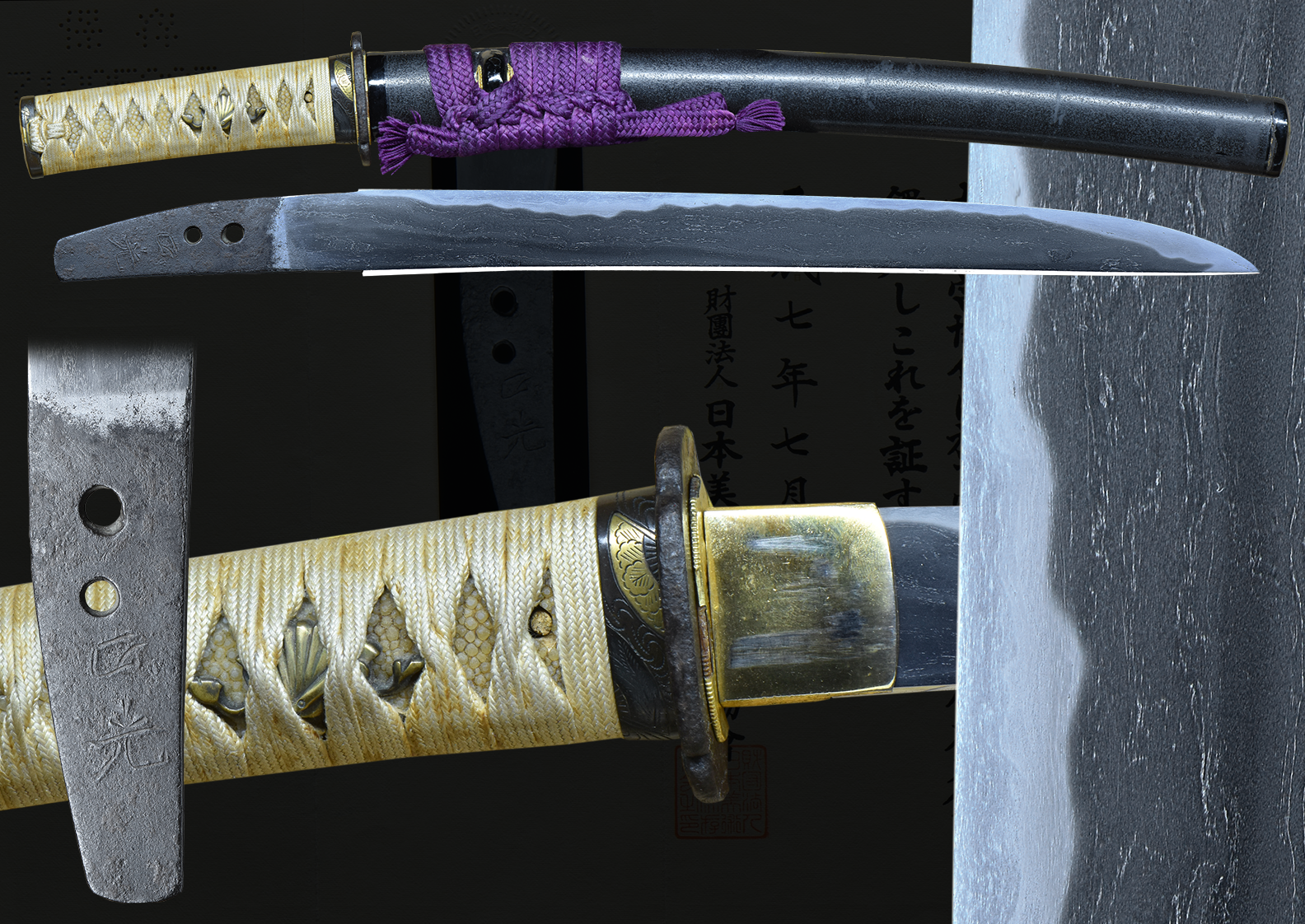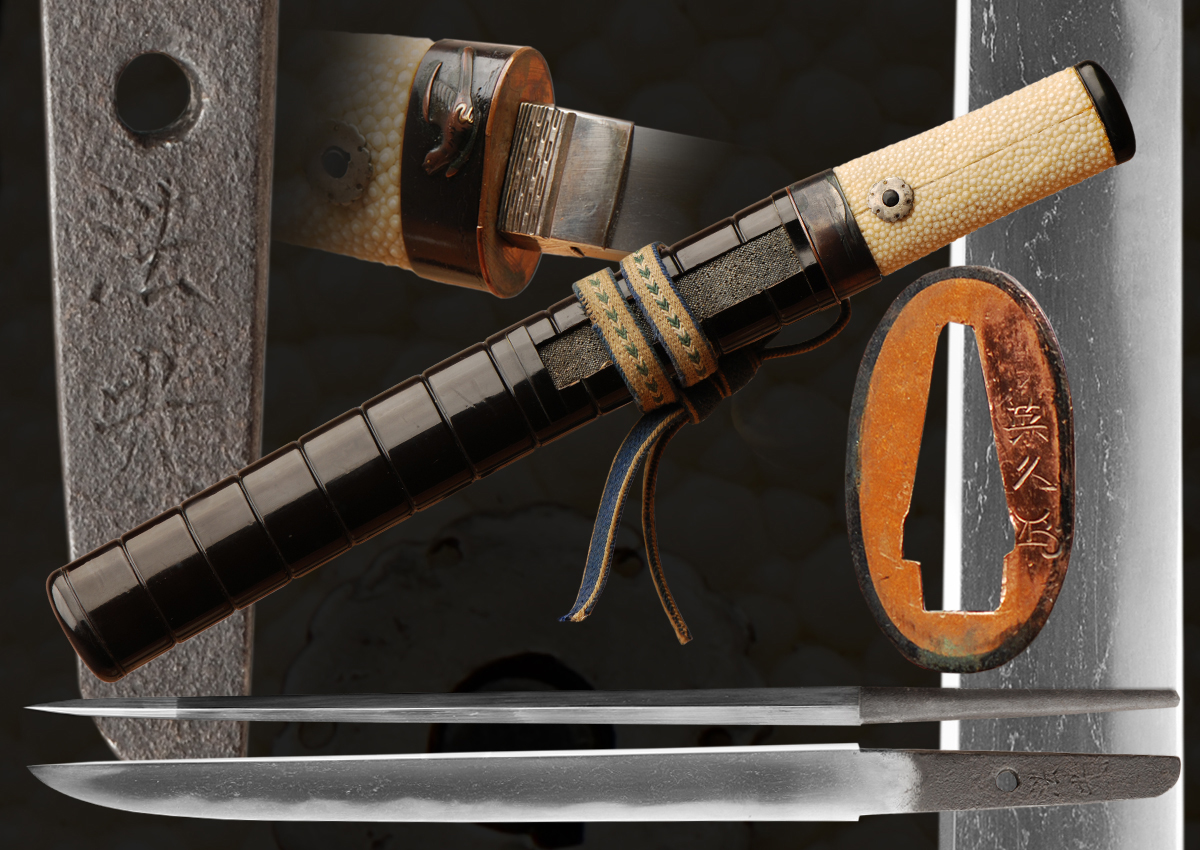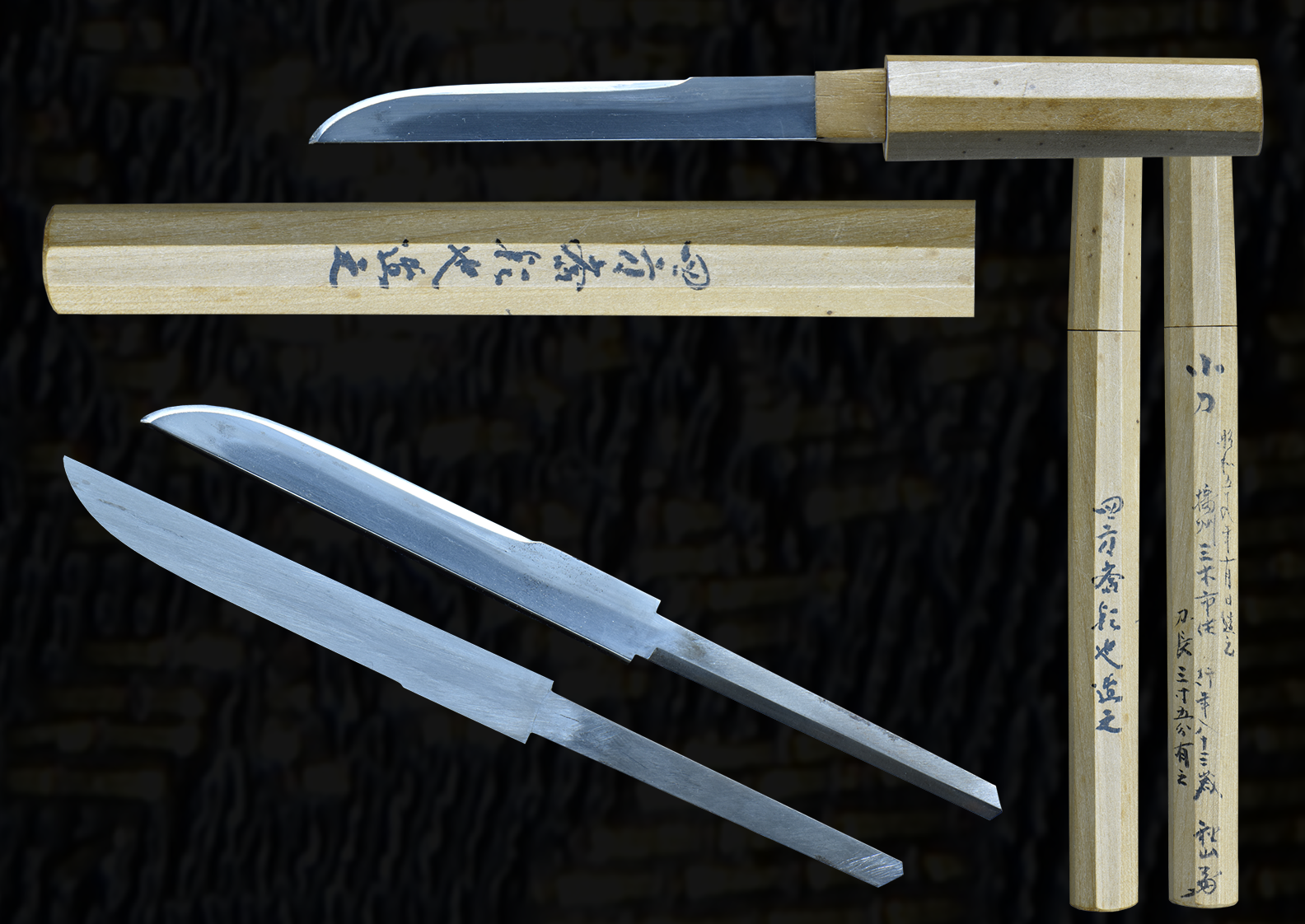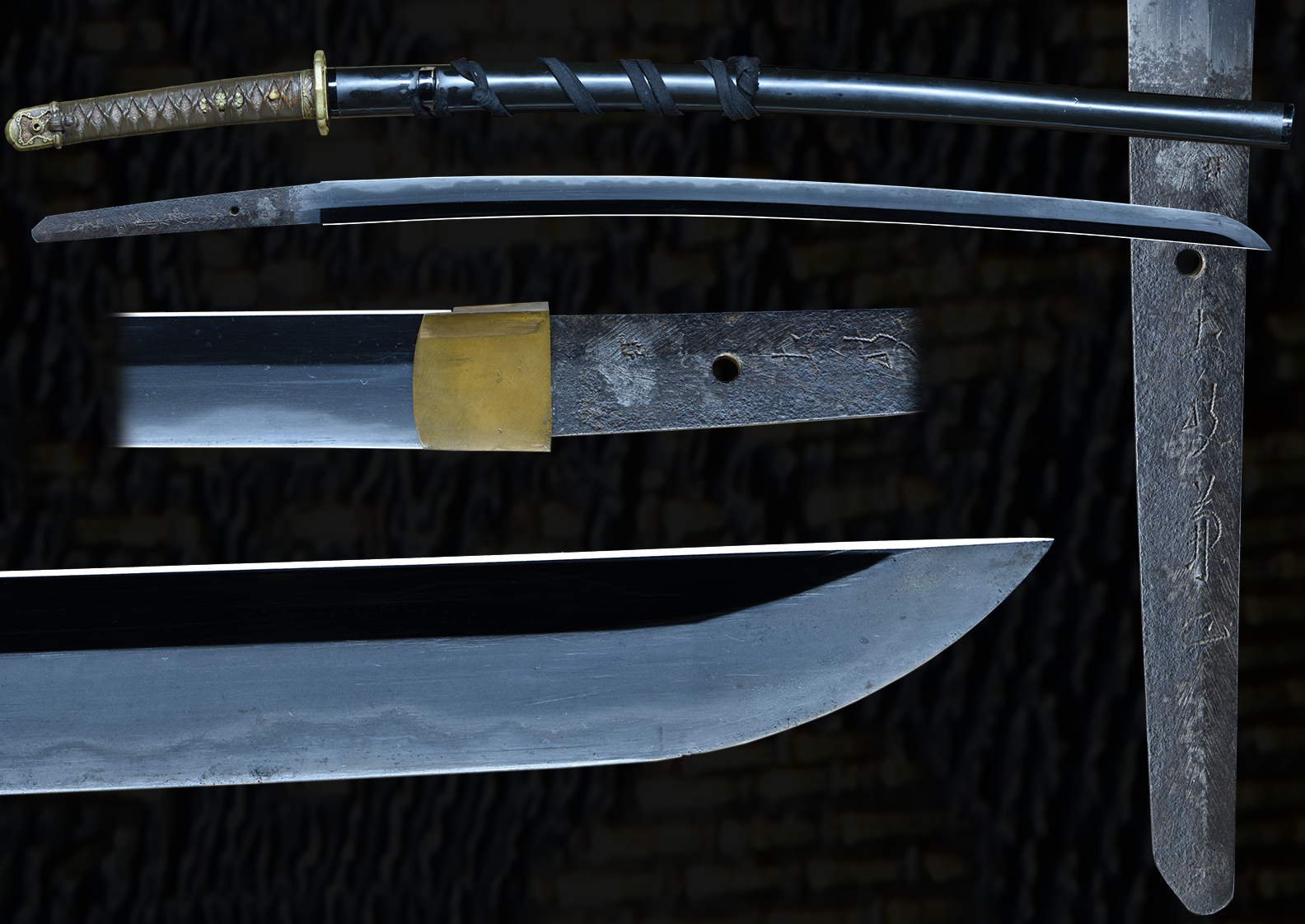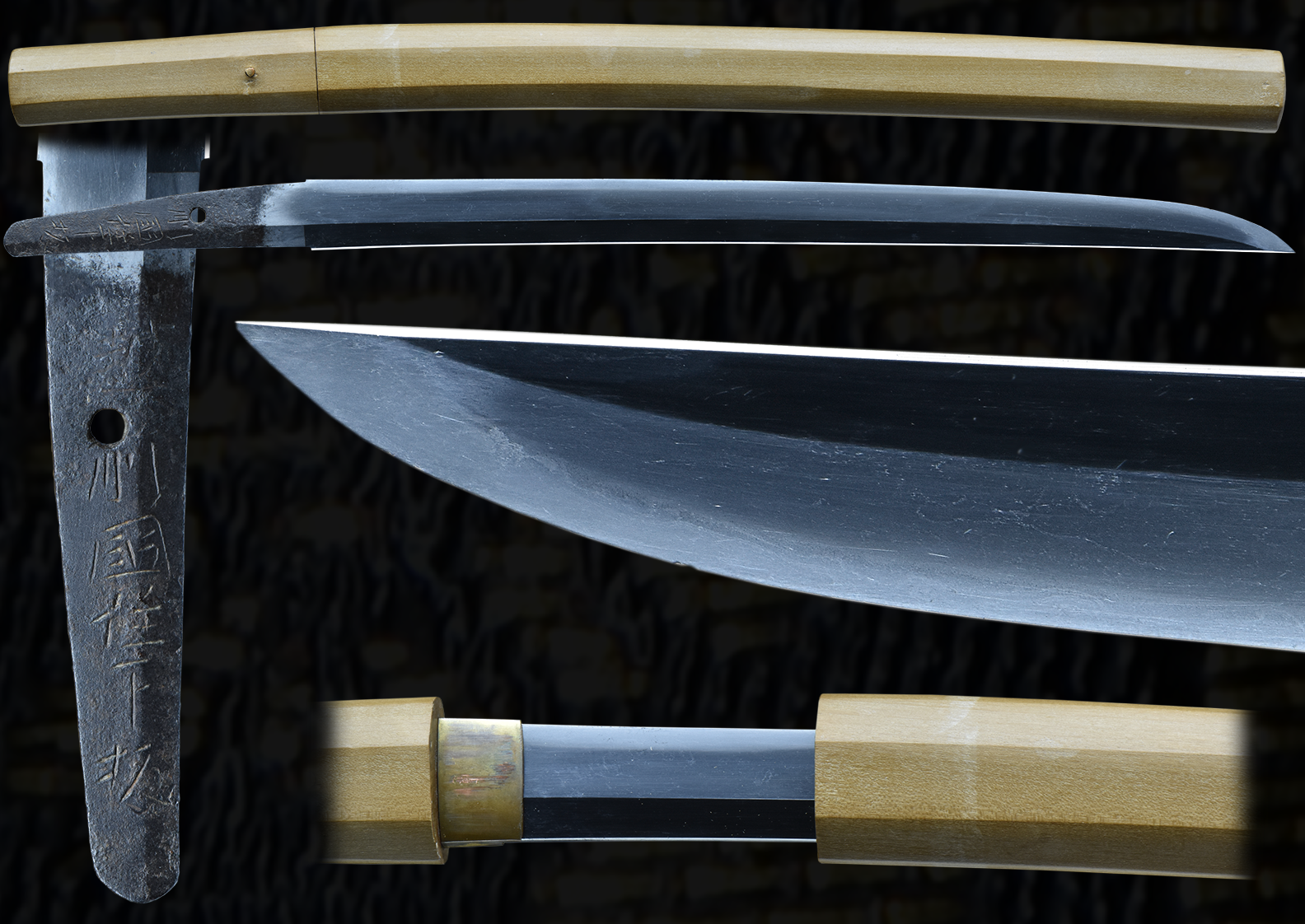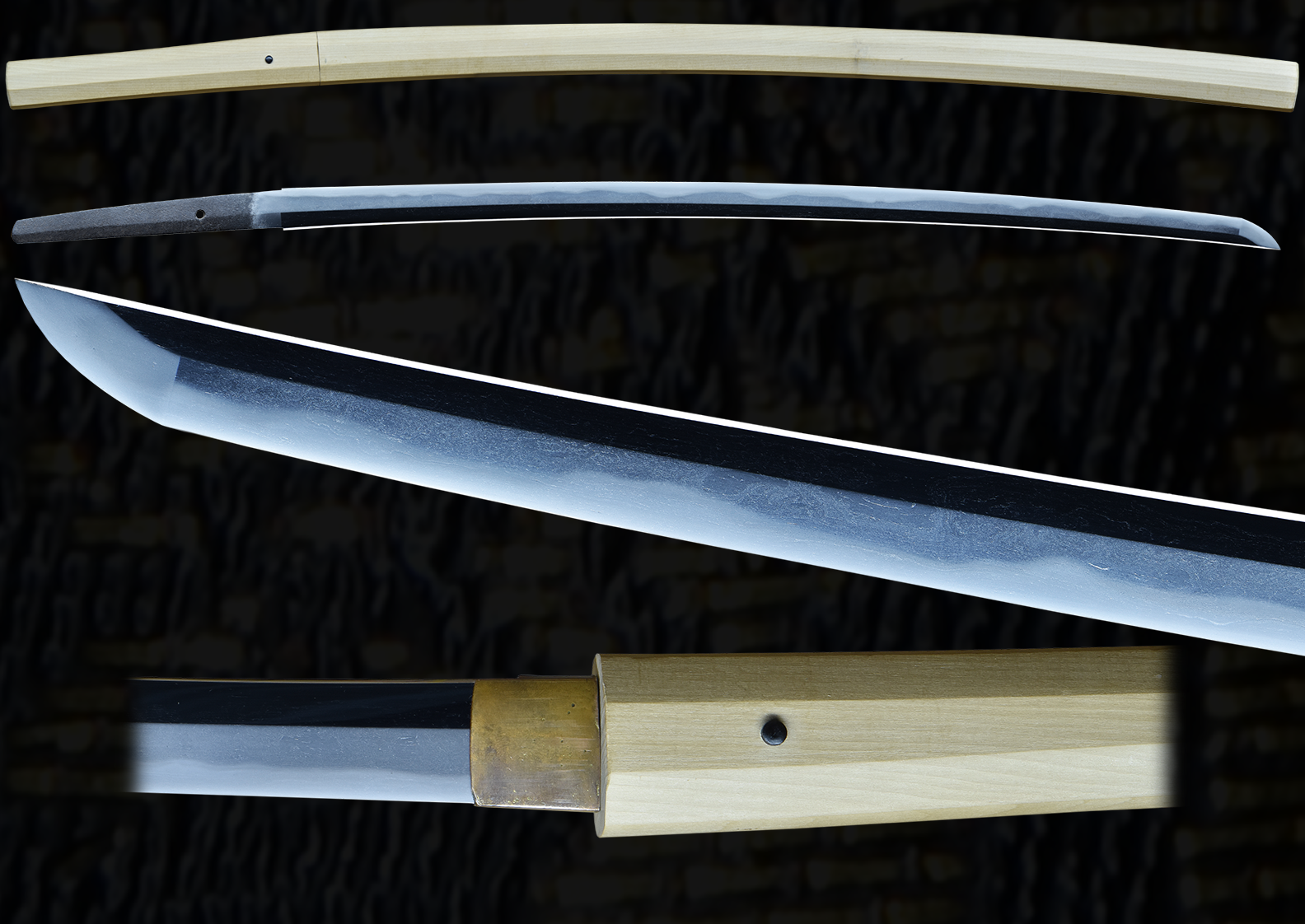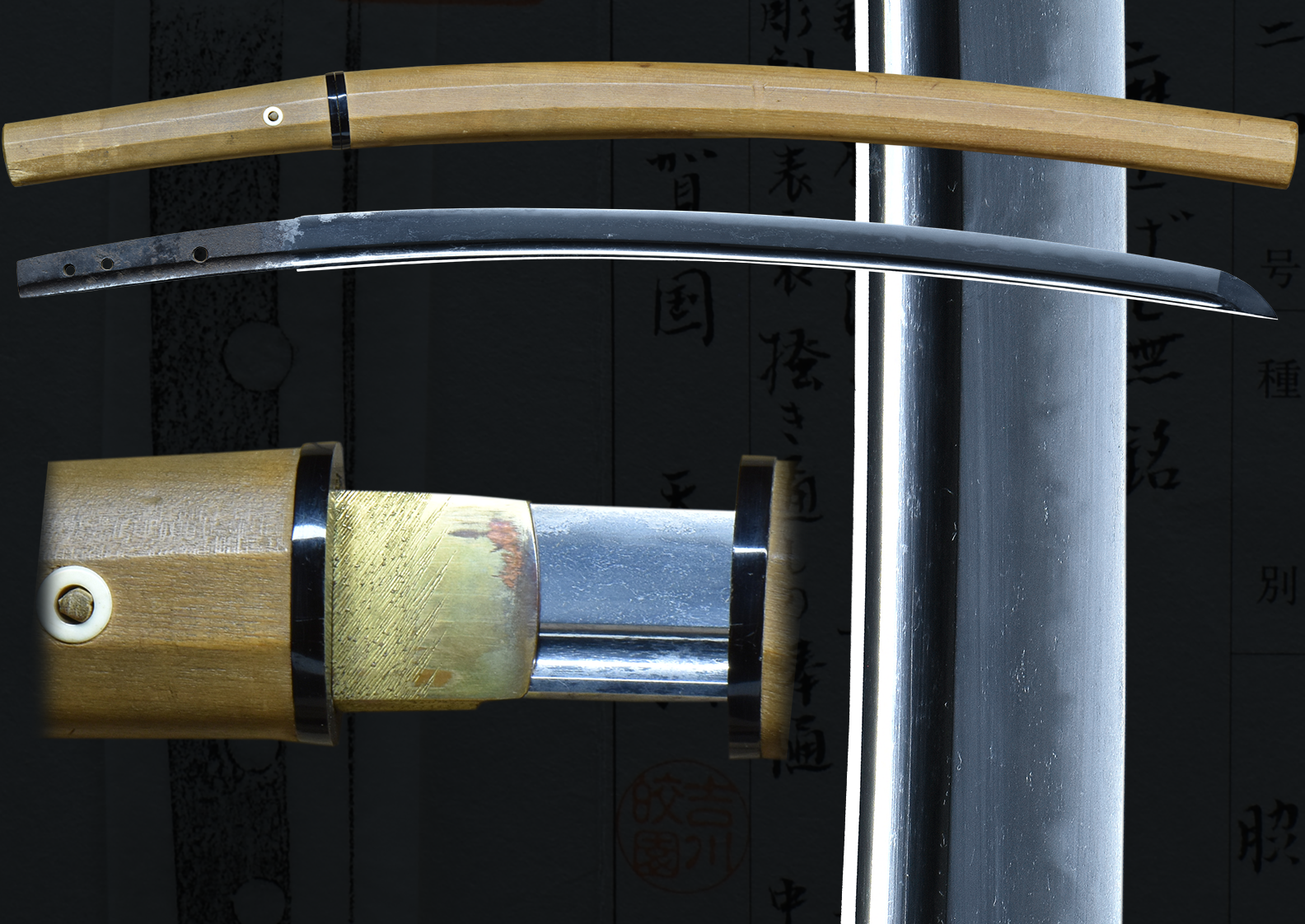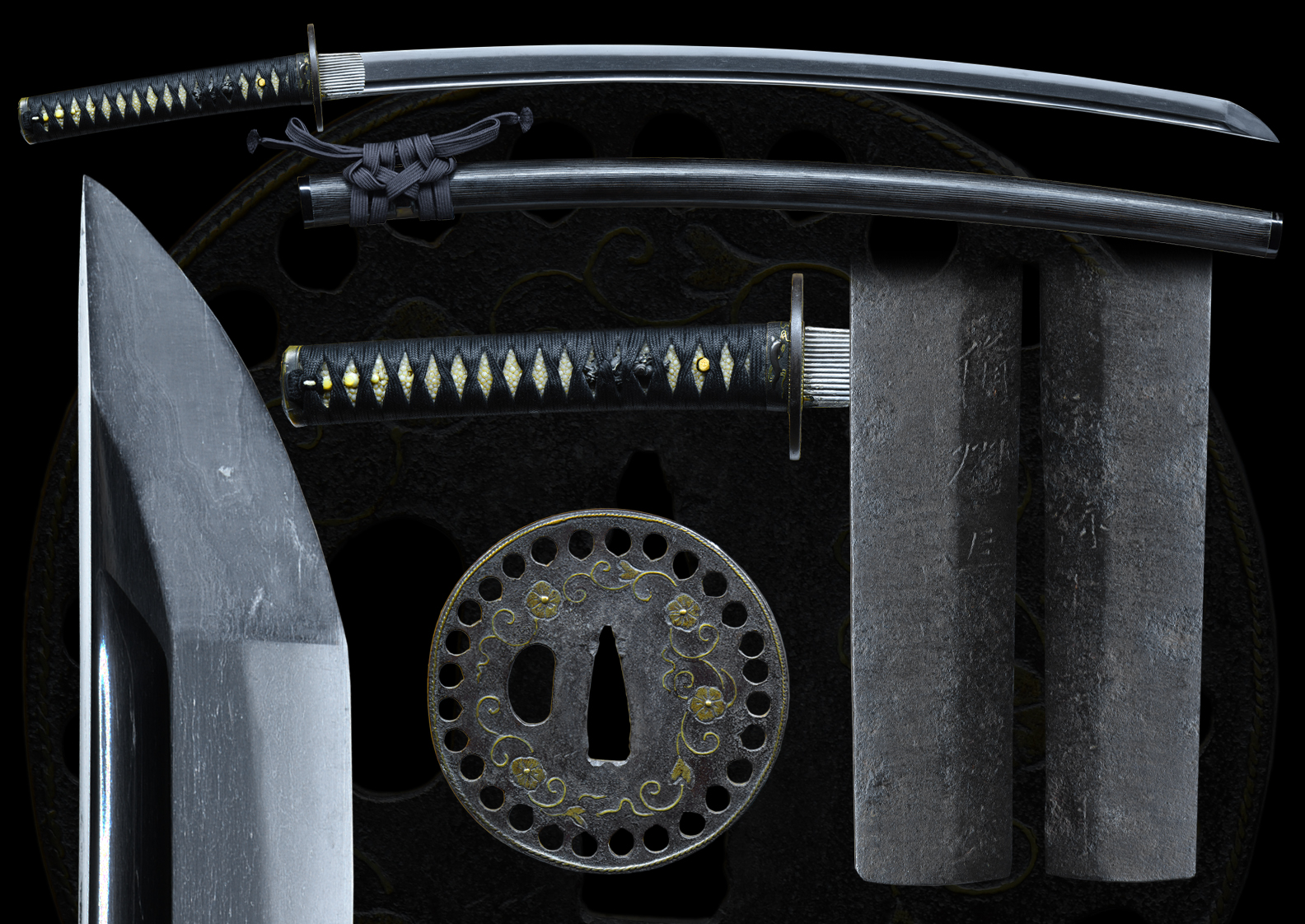Item description here:
This is a wonderful example of a Bizen school sword that is signed and dated. This is a legitimately signature. A signed and dated blade is very interesting for a collector. It reads Bishu Osafune Sukesada, the date is very difficult to make out. This sword should be submitted to shinsa someday in the future to add to its overall value. We feel it dates from the1500’s or a bit later from the look and patina of the nakago and the blade itself. The hamon is a wide suguba with good hataraki/activity. The hada is mokume. The sword has bohi, that are well carved. This is a very well balanced sword and should also be considered for a quality iaido sword because of the Bohi carvings. The sword has original koshirai and the fuchi/kashira is a married set. The menuki are dragons and the tsuba is iron tsukashi with inlayed brass. The mounts have some wear from age as the handle wrapping is old silk and the koiguchi has minor damage that restorable. The overall look and feel of this sword and its mounts is of a serious samurai sword not meant to be flashy.
The history of Bizen swords
During the latter half of the Heian period (794–1185) the Minamoto clan and the Taira clan emerged as the two major warrior clans, with the tachi sword rapidly becoming their weapon of choice. More and more swordsmiths producing various tachi sword styles began to appear in the province of Bizen, which is also the location for quality iron sand. After the passing of Minamoto no Yoritomo (1147–1199) in the Kamakura period, Empoeror Gotoba (1180–1239) promoted swordmaking in his bid to counter the Hōjō clan. With the Hōjō clan winning the Jōkyū War (1221) and seizing power, the techniques of making tachi swords — which were the main weapons in these battles — developed further, reaching a pinnacle in the history of Japan’s swords. With the changes in of warfare methods taking place during the latter half of the Kamakura period (1185–1333) and the Nanbokuchō period of Northern and Southern Courts (1333–1392), infantry replaced cavalry and the lighter, shorter uchigatana (katana) swords also became complementary to the long heavy tachi swords. After the outbreak of the Ōnin War (1467–1477) uchigatana sword became the main weapon and demand for this type of sword peaked. To satisfy this demand, many swordsmiths begain residing at Osafune; it is said that there were so many of them that area boasted “thousands of smith shops” between Kamakura and Muromachi (1392–1573) periods.
- Mei: Bishu Osafune Sukesada (The Osafune is difficult to read because of nakago rust)
- Date: The sword is dated but the date is very worn because of age and rust.
(approximately from the1500’s or later) - Nagasa: 26-1/2 inches
- Sori: 15.0 mm
- Width at the ha-machi: 31.5 mm
- Width at the yokote: 21.7 mm
- Thickness at the mune-machi: 7.2 mm
- Construction: Shinogi zukuri
- Mune: Iori
- Nakago: Ubu
- Kitae: mokume
- Hamon: Suguba
- Boshi: Maru
- Condition: Good older polish
(shipping and insurance included)
Email us if your interested in this item and remember to include the order number for this item: fss-863.
Click to Enlarge Image
For Sale
